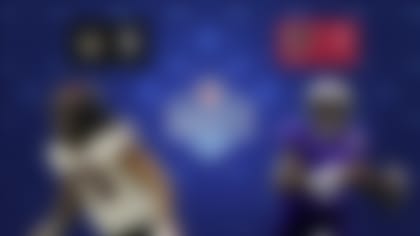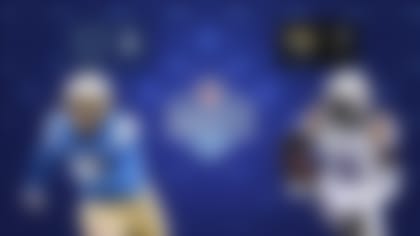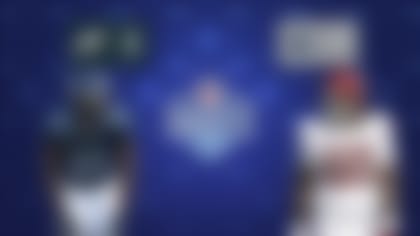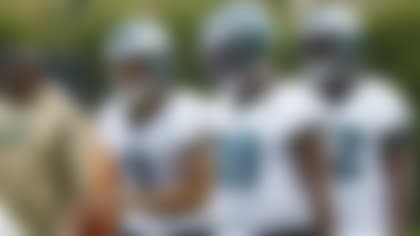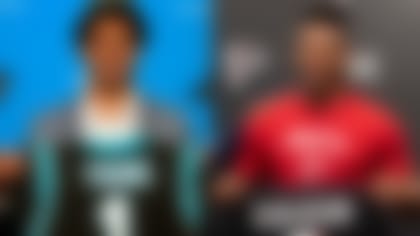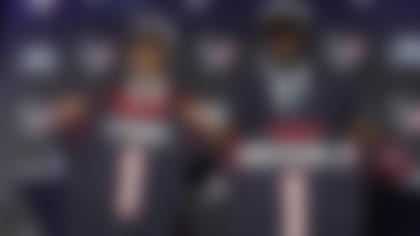NFL.com analyst Bucky Brooks is handing out grades for each team following the 2009 NFL Draft. Check back daily as he breaks down each team, division by division.
After watching the draft come and go, it's time to assess how each team fared in the league's biggest offseason event. From the acquisition of talent to the execution of various draft strategies, teams here are graded on their overall ability to play the chess game that emerges on draft weekend.
Let's take a look at how the teams from the NFC North performed during the 2009 draft:
[
Chicago Bears: B
The Bears were without a first-round pick this year because they sent two first-round picks (2009, 2010) to Denver for Jay Cutler, but getting a Pro Bowl quarterback in return more than makes up for the lost pick this year. The team hasn't had a Pro Bowl quarterback in more than 20 years, and obtaining an elite signal-caller in his prime was a huge coup for the franchise.
Without a pick until the middle of the second round, GM Jerry Angelo had targeted a handful of players who could fill the team's biggest need with the 49th overall pick. However, when those players unexpectedly flew off the board, the Bears made the decision to trade out of the spot to obtain more picks on the draft's second day, and the team appeared to grab a handful of key contributors with their mid-round selections.
Jarron Gilbert and D.J. Moore were highly rated on most boards but unexpectedly fell into mid-round consideration. Both have the ability to contribute immediately as rookies and will play vital roles in the Bears' retooled defense. Marcus Freeman has the athleticism to be a standout special teams contributor, but he could also be a nice fit as a linebacker in Chicago's two-deep defensive scheme.
Offensively, the Bears gave Cutler a few weapons in the passing game with Juaquin Iglesias and Johnny Knox. Iglesias was regarded by many as the best slot receiver in the draft, and he should fit in nicely as a third or fourth receiver.
The Bears' draft has to be graded on a curve due to the Cutler acquisition, but the team did a masterful job of upgrading the talent and depth in the bottom half of their roster with their second-day selections.
[
Detroit Lions: C+
After finishing winless in 2008, the Lions entered the offseason with numerous holes across the board. Free agency brought in some nice pickups, but the draft is where the team needed to close the gap on the competition.
With the No. 1 pick, the Lions had the opportunity to set the table for their return to respectability, and they opted to make a quarterback the pillar of their rebuilding efforts. Matthew Stafford was inked to a six-year, $78 million deal on the eve of the draft to become the new face of the franchise. Though there are some questions about whether the weapons are in place to ensure success for the young signal-caller, the Lions couldn't pass on the opportunity to grab a quality quarterback with the top pick.
To the dismay of some fans, the Lions opted to take the best tight end (Brandon Pettigrew) on the board with their second first-round pick over several highly regarded defensive prospects. While Pettigrew immediately helps the Lions' offense as a legitimate target over the middle, the defense needed a middle linebacker. Rey Maualuga appeared to be an ideal fit for Jim Schwartz's defense.
The selection of safety Louis Delmas gave the defense a much-needed enforcer in the back end. The former Western Michigan standout is a hard hitter with the athleticism and range to make plays in the passing game. He is clearly the top-rated prospect at the position, and his selection gives the Lions three of the top-ranked players at their respective spots.
In the latter stages of the draft, GM Martin Mayhew and Schwartz filled needs at linebacker and defensive line. While they missed out on securing a pure middle linebacker, they may have hit on a defensive tackle with big-time potential in Sammie Lee Hill.
Overall, the Lions' draft will be judged by the success or failure of Stafford, but the team did make strides in building up the overall talent base of the roster.
[
Green Bay Packers: B+
Packers GM Ted Thompson is classified as conservative in many areas, but history has shown that he is one of the more aggressive players on draft day, and this year's draft was no exception.
After fortifying the interior of their new 3-4 defense with the selection of B.J. Raji, the Packers made an aggressive move to get back into the first round to nab outside linebacker Clay Matthews Jr. The duo is expected to play a key role in the team's new defensive scheme, and each is surrounded by enough talent to ensure their success.
With a huge void at offensive tackle, the Packers grabbed a draft sleeper in T.J. Lang. Furthermore, the team later added one of the more versatile linemen available with the selection of Jamon Meredith in the fifth round.
Throw in the addition of fullback Quinn Johnson, and the Packers suitably addressed their biggest offensive needs without expending high picks on the players.
Green Bay is often derided for its seemingly passive approach to player acquisitions, but the Packers' execution of their draft-day plan should be lauded in 2009.
[
Minnesota Vikings: C+
The team that many feel is on the cusp of Super Bowl contention entered the draft in need of more firepower on offense. With only five draft picks at their disposal, the Vikings wisely played the board to make sure they hit on all of their needs.
With the 22nd pick, Minnesota tabbed the wideout that several scouts had described as one of the most explosive skill players in the draft in Percy Harvin. Though the former Florida Gator had been described as a character risk, Harvin is a dynamic weapon capable of scoring points from anywhere on the field. As a runner/receiver, he gives coach Brad Childress an explosive toy to incorporate into a variety of packages. If Harvin stays out of trouble, he could take the Vikings offense to the next level.
The team addressed its biggest need with the selection of Phil Loadholt in the second round. The right side of the Vikings' line has been plagued by inconsistency at tackle, and the massive Loadholt should remedy the issue with his superior run-blocking skills.
Asher Allen, Jasper Brinkley and Jamarca Sanford add depth and athleticism to the team's special-teams units. Of the three, Allen has the best chance to contribute immediately as a nickel corner in the Vikings' sub-packages.
The Vikings' draft strategy appears sound and solid, as the team took the best available player in each round. However, the grade ultimately hinges on the overall success of the Harvin selection. If the talented playmaker can avoid trouble and provide the big plays that everyone expects, the Vikings will be applauded for masterful management of the risk/reward factor. If it doesn't work out, not only will the Vikings be subject to ridicule, but the head coach gambling on the pick will likely lose his job.



